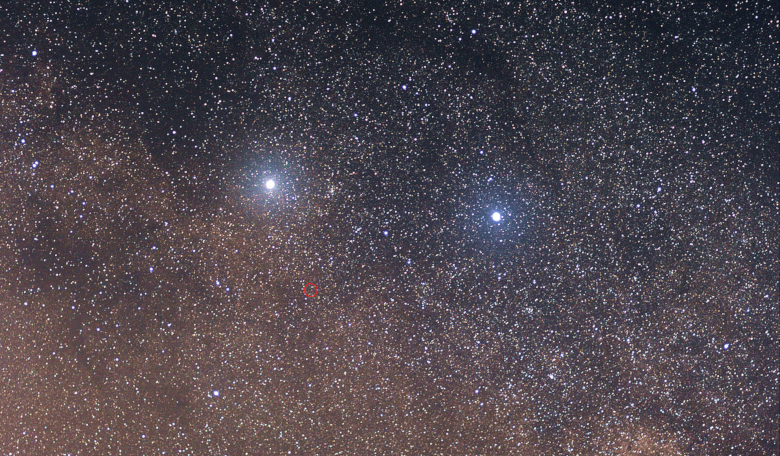Scientists using a new technique to image exoplanets in the mid-infrared may have just found a super-Earth-sized exoplanet around Alpha Centauri, the nearest star system to us. Whats more the planet is orbiting in its star’s habitable zone.
At just over 4.22 light years from Earth, Alpha Centauri shines in the sky as a single star and the third-brightest star visible from our world. But, in reality Alpha Centauri is a triple star system consisting of two sun-like stars, Alpha Cen A & B, and a smaller red dwarf star called Proxima Centauri.
Proxima Centauri is already famous for harbouring a a rocky planet – Proxima b – not much bigger than the Earth; a significant finding uncovered by scientists a few years ago, after the exoplanet was spotted whizzing around the red dwarf in just 11 days.
Despite the close proximity of the Alpha Centauri system, it took many years to find Proxima b, so it is not surprising that scientists working on exoplanets would like to see the discovery process shortened significantly.
One promising method is the ability to directly image planets - a technique recently used by a team of astronomers headed by Kevin Wagner at the University of Arizona to search for exoplanet candidates orbiting Alpha Cen A.
Their method involved outfitting ESO’s (European Southern Observatory's) Very Large Telescope (VLT) in Chile with new capabilities to image exoplanets in the mid-infrared.
Infrared light has longer wavelengths than visible light, and while an image taken of an exoplanet in infrared would not show blue skies and rocky continents for example, it is the portion of the electromagnetic spectrum in which temperate Earth-like planets shine brightly in thermal emission.
Infrared thermal imaging cameras on this planet are used frequently by law enforcement to “see” hiding burglars or track someone fleeing a crime scene from high above ground in a helicopter.
In principle, the two methods are similar, but instead of hunting people, Wagner and team used their mid-infrared camera known as (VISIR) to hunt exoplanets.
Using VISIR, the team were able to observe Alpha Centauri over 100 cumulative hours in a commissioning run that was meant to demonstrate the power of the instrument.
In doing so, the team reached sensitivity levels that were more than a 10 times improvement over typical exoplanet imaging capabilities – a huge step towards imaging Earth-sized planets, Wagner says in a tweet.
Another interesting aspect of their study says Wagner, is that a weak signal in the data that could belong to a possible exoplanet or exozodiacal disk detection around Alpha Centauri A was also found.
If confirmed, this would be an exciting find as both Alpha Cen A & B are about the same size and temperature as our Sun, meaning their habitable zone, the range where liquid water is possible on the surface of any orbiting exoplanet, are about the same size as ours.
The team acknowledge that the signal could be an instrumental artefact of unknown origin however and that follow-up work will be needed to rule this out.
Whether the signal turns out to be the discovery of the closest exoplanet to us around a sun-like star, now dubbed Candidate 1, or C1, or something else all together, at the very least, these results demonstrate that imaging rocky habitable-zone exoplanets with current and upcoming telescopes should be possible, say the team.
“We look forward to the new capabilities that our method has proven are possible. We believe that with further improvements we’ll soon be able to directly image any smaller, possibly Earth-like planets orbit in Alpha Centauri’s habitable zones,” Wagner says via Twitter.
These results have been published as part of the New Earths in the α Centauri Region (NEAR) campaign and can be found in Nature Communications.











